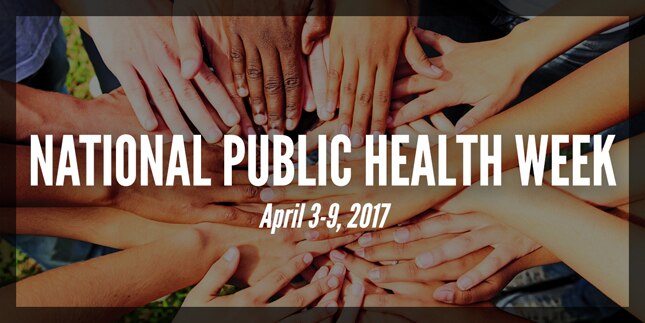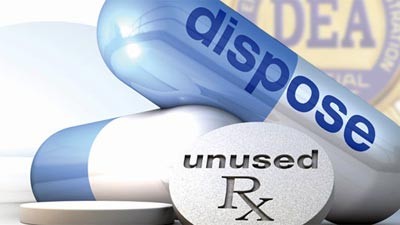Addressing Public Health Crises: Suicide and Opioid Addiction are Preventable

During National Public Health Week  , April 3-9, we celebrate the progress we’ve made helping people live healthier lives and those public health professionals who have helped us make that progress. But one hallmark of public health is life expectancy, and the United States just experienced a drop in overall life expectancy for the first time since 1993. This was due in part to increases in two of the nation’s most heart-breaking and yet preventable public health issues facing us: the increasing rate of suicide and the increasing misuse of opioid drugs.
, April 3-9, we celebrate the progress we’ve made helping people live healthier lives and those public health professionals who have helped us make that progress. But one hallmark of public health is life expectancy, and the United States just experienced a drop in overall life expectancy for the first time since 1993. This was due in part to increases in two of the nation’s most heart-breaking and yet preventable public health issues facing us: the increasing rate of suicide and the increasing misuse of opioid drugs.
In 2015, nearly 44,200 deaths were due to suicide in the United States, or about one suicide every 12 minutes. According to a recent report by the Centers for Disease Control and Prevention, about 600,000 U.S. residents died by suicide from 1999 to 2015. The suicide rate has steadily climbed, resulting in a 2015 rate that is 28 percent higher than in 2000.
Suicide rates in less urban areas have been higher than those in more urban areas. During this time period, the gap in suicide rates increased between less urban and more urban areas. This gap began to widen more quickly in 2007-2008, possibly reflecting the impact and financial hardship of the recession, which hit rural areas harder.
Geographic disparities may also be associated with limited access to mental health care and greater social isolation, as well as the “opioid overdose epidemic,” according to the CDC report.
According to the CDC report: “Communities can benefit from implementing policies, programs and practices based on the best available evidence regarding suicide prevention and key risk factors.” And the National Suicide Prevention Lifeline  , 1-800-273 TALK (8255), supported by the Substance Abuse and Mental Health Services Administration (SAMHSA), is always available for anyone in need of help or information about suicide prevention.
, 1-800-273 TALK (8255), supported by the Substance Abuse and Mental Health Services Administration (SAMHSA), is always available for anyone in need of help or information about suicide prevention.
Opioids include both prescription medications, such as hydrocodone, oxydone, morphine and methadone, which are approved to manage pain, as well as illicit drugs, such as heroin.
Suicide and opioid misuse and abuse risk factors can overlap, including pain, other addictions, mental disorders and disruptions in social support. Whether opioid overdose is unintentional or intentional, more than 300,000 Americans have died since 2000, including more than 33,000 deaths involving prescription and illicit opioids in 2015 alone.
To address this crisis, President Trump recently established a Commission on Combating Drug Addiction and the Opioid Crisis, which has been tasked to make recommendations to the President for improving the federal response to the opioid crisis. The commission includes heads of key Cabinet departments, including HHS Secretary Tom Price.
The National Action Alliance for Suicide Prevention  and the Surgeon General’s Report on Alcohol, Drugs and Health provide roadmaps for comprehensive public health approaches to suicide and substance abuse prevention. The emotional and economic impact on individuals as well as on families and communities demand a continued proactive and coordinated response.
and the Surgeon General’s Report on Alcohol, Drugs and Health provide roadmaps for comprehensive public health approaches to suicide and substance abuse prevention. The emotional and economic impact on individuals as well as on families and communities demand a continued proactive and coordinated response.
Both opioid addiction and suicide are serious preventable and treatable public health problems, and everyone has a role to play. Learn about some of the available resources for treatment options, mental health and behavioral health issues and related concerns:
- CDC’s Preventing Suicide: a Technical Package of Policies, Programs, and Practices.
- How to find SAMHSA’s package of resources for individuals, families, friends and health care providers, including treatment and physician locators, opioid overdose toolkit, and Veteran’s Crisis Hotline.
- CDC’s resources on opioid overdose prevention.
- Guideline for Prescribing Opioids for Chronic Pain.
During #NPHW, we recognize the work that remains to address #opioid addiction & suicide. They are preventable. https://go.usa.gov/xXRBB









